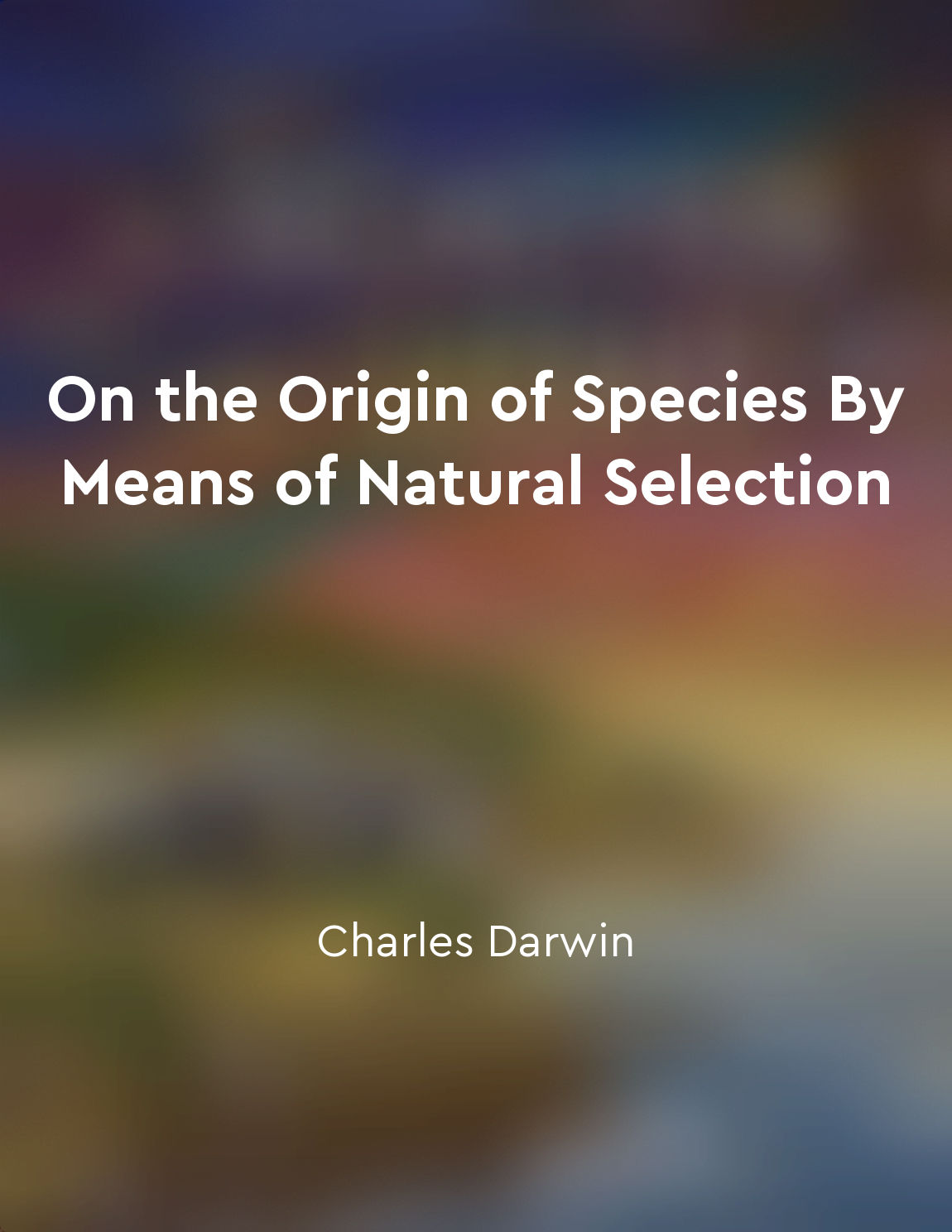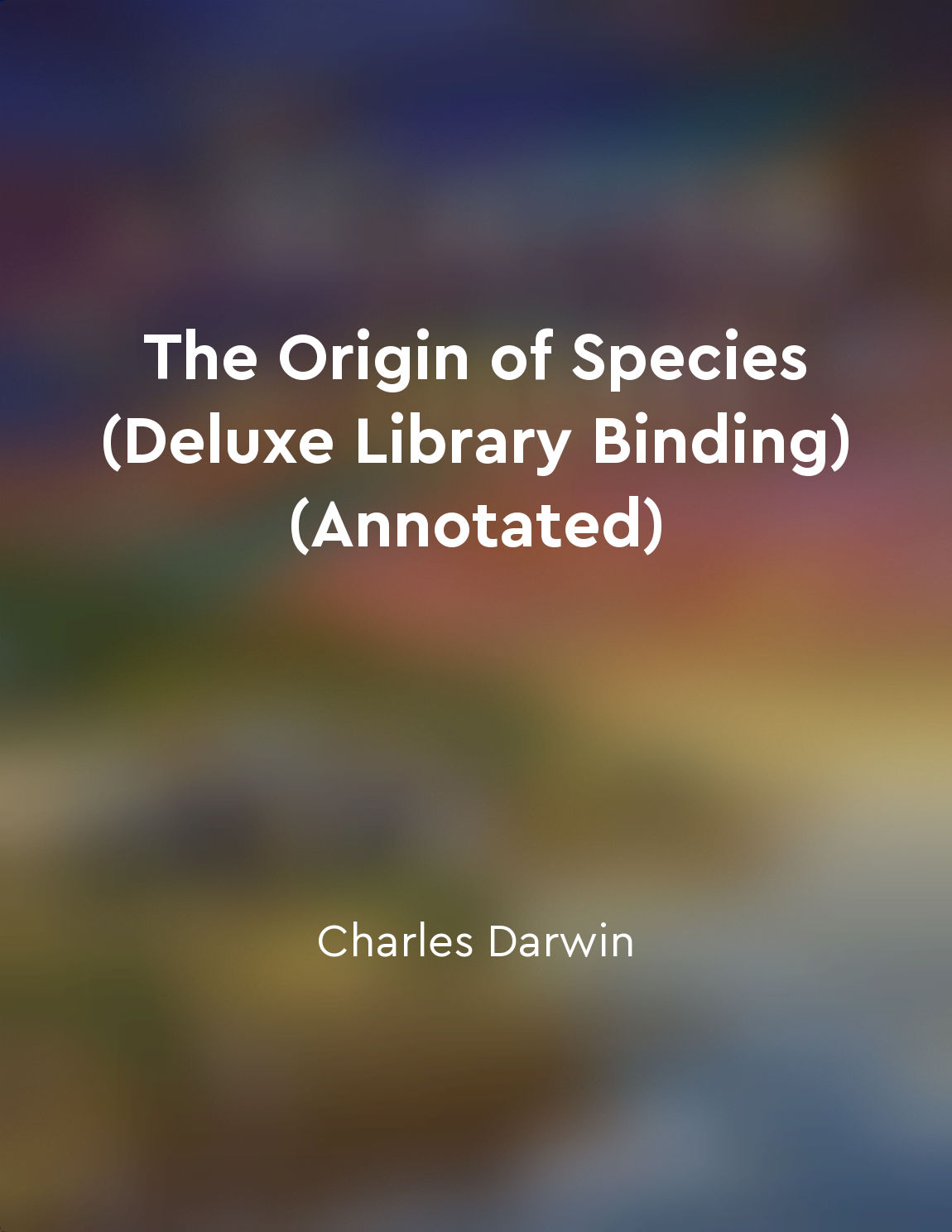Geographical distribution of species from "summary" of On the Origin of Species By Means of Natural Selection by Charles Darwin
The geographical distribution of species is a topic of great interest to naturalists, as it can provide valuable insights into the processes of evolution. When we consider the distribution of species across different regions of the world, we often find patterns that are not easily explained by random dispersal or by creationist beliefs. Instead, these patterns suggest that species have evolved in specific geographical contexts, adapting to the unique environmental conditions of their respective habitats. One striking example of geographical distribution is the presence of similar species in distant regions that are separated by barriers such as oceans or mountain ranges. For instance, the distribution of certain species of plants and animals in South America and Africa can be explained by the breakup of the ancient supercontinent Gondwana, which once connected these regions. The similarities between species in these distant locations suggest a common evolutionary history that dates back to the time when these landmasses were still joined. In addition to explaining the distribution of similar species across different regions, the study of geographical distribution can also shed light on the factors that have influenced the diversification of life on Earth. For example, the presence of endemic species in isolated islands like the Galapagos can be attributed to the process of adaptive radiation, in which a single ancestral species gives rise to multiple descendant species that have adapted to different ecological niches. Furthermore, the study of geographical distribution can help us understand the role of geological events, such as the movement of tectonic plates, in shaping patterns of species distribution. By examining the distribution of species in regions with complex geological histories, we can gain insights into how past environmental changes have influenced the evolution of life on Earth.- The geographical distribution of species is a rich field of study that can provide important clues about the processes of evolution and the interconnectedness of life on our planet. By investigating the patterns of species distribution across different regions, we can uncover the hidden stories of how life has evolved and diversified over millions of years.
Similar Posts

The concept of race is a social construct with no biological basis
Race is a concept that has been deeply ingrained in society for centuries. It is often used to categorize and differentiate peo...
Our ancestors migrated across continents in search of resources
Human ancestors, like all living creatures, migrated in search of resources. The quest for sustenance drove them to traverse co...
Life invites us to ask difficult questions
Life is full of uncertainties and complexities that often leave us pondering about the meaning and purpose of our existence. It...
Ecology studies the interactions between organisms and their environment
Ecology is a branch of biology that examines the relationships between living organisms and their surroundings. It delves into ...

Faith should not be seen as a virtue
In the eyes of many believers, faith is considered a virtue. It is often seen as a positive quality, something to be admired an...

Continued evolution in response to changing environments
The process of evolution is not a fixed or static phenomenon, but rather a continuous and dynamic one that is inextricably link...

Survival of the fittest is key
In the natural world, competition is a constant force that shapes the evolution of species. The individuals within a population...

